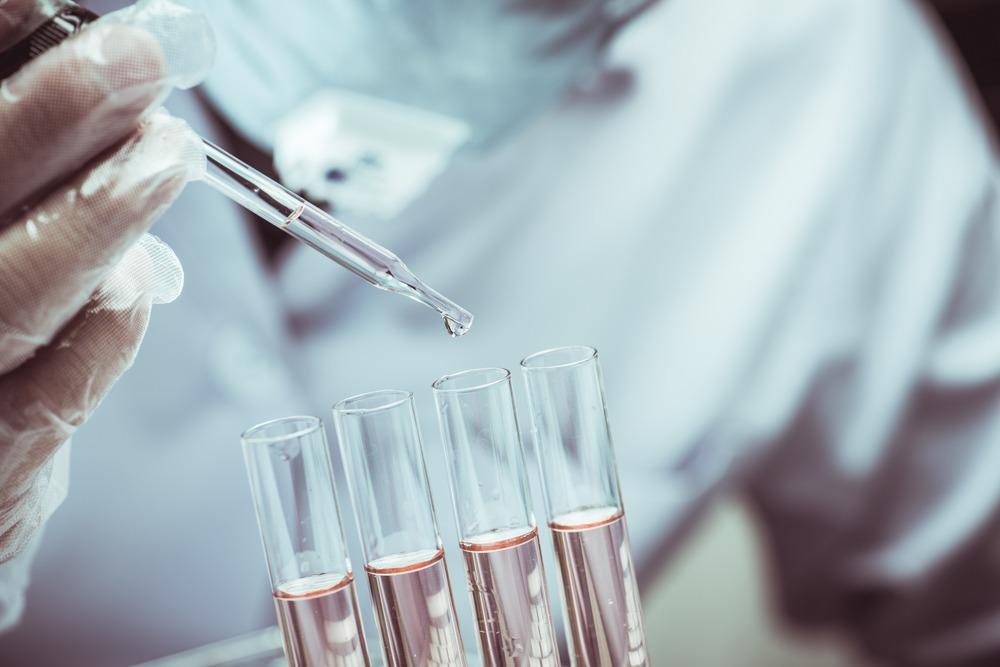Knowledge of the application prospects of ionic liquids for electrochemical nanostructure synthesis is currently limited due to the underestimation of ionic liquids (ILs) capabilities An article from the journal Nanomaterials analyses the aspects of electrosynthesis techniques for nanomaterials in ILs to advance their applications.

Study: Electrochemical Synthesis of Unique Nanomaterials in Ionic Liquids. Image Credit: LookerStudio/Shutterstock.com
Here, the electrochemical production of nano-polymeric coatings of conductive composites made utilizing ILs is also described.
A Unique Method of Fabricating Nanomaterials
Nanotechnology has the potential to be useful in a wide range of scientific and technological domains. Many consumer items have already incorporated nanomaterials, with extensive use in the medical, fabric, and cosmetics industries.
The qualities of nanoparticles and their potential applications are dictated by their size and surface condition. In turn, these are influenced to a large degree by the techniques used to create them.
The electrolytic window, the material of the electrodes, the nature of the precursor, reaction temperatures, additives, and fundamental electrolytic factors all influence the electrochemical synthesis of any substance.
Electrolytic approaches allow for the one-step fabrication of nanomaterials of different sizes, structures, and chemistries by altering the experimental setup and conditions.
Ionic liquids have already shown promise in a variety of application areas. They are almost entirely made up of cations and anions, which are, in effect, free charge carriers.
As ionic liquids have a reasonably high electrochemical stability and ionic conductivity, their application in electrochemical processes, electrocatalysis, and electroplating is undeniably industrially appealing.
Ionic liquids provide substantial benefits over conventional electrolytes in several circumstances. For example, ILs with huge electrochemical window (5–9 V) have recently been developed and can be utilized regularly without the degradation of their characteristics or structure.
Ionic liquids are often referred to as "designer solvents" owing to the ability they provide to rationally pick and create the chemical makeup of the cation and anion, resulting in an optimized structure–property combination.
The electrochemistry of nanomaterials is divided into two major areas: the fabrication of electrodes with embedded nanoparticles and electrochemical techniques to synthesize nanoparticles. The use of ionic liquids in the creation of nanomaterials considerably reduces the number of steps and reagents employed since ILs are inherent nanoparticle stabilizers.
Challenges
In certain situations, the contamination of produced nanomaterials with ions and elements from the IL complicates these procedures. Furthermore, whether ionic liquids are utilized as solvents, electrolytes, or gas absorbers, interactions between Ionic liquids and substrates might result in byproduct creation.
Therefore, reactions must be performed with the utmost care, particularly in the presence of catalysts with low transition metal concentrations. The byproducts of these reactions can modify the IL's physical and chemical characteristics, such as changing its fluidity, conductivity, adsorption capacity, and solubility, which hampers IL regeneration.
One of the factors restricting nanomaterials' use is the fairly expensive cost of their production and the high expense of ionic liquids. The development of nanostructures on the surface of the electrodes might also be undesired.
High concentration IL electrolytes, with a 1 to 1 ionic liquid alkali metal ion ratio, combined with pre-conditioning at higher negative potentials may overcome these issues and, as a result, transform high energy density storage systems.
To Conclude
As many ionic liquids have a broad electrochemically stable window, it is possible to create nanomaterials that would be otherwise impossible to manufacture from conventional aqueous solutions or non-aqueous solvents and electrolytes.
ILs may form expanded systems in the liquid phase owing to hydrogen bonding and may be thought of as "supramolecular" solvents in this sense. This unique characteristic could be employed to create longer-ordered nanostructures or influence morphological characteristics by using the template effect of different ionic liquids.
Ionic liquids can be used to effectively fabricate different nanostructures on the surface of conductive materials, such as semiconductors, oxide nanotubes, monometallic and bimetallic nanoparticles, as well as nanocomposites and hybridized nanomaterials.
Continue reading: Controlling Nanoparticle Size with Graphene Oxide and Microwave Radiation.
Reference
Lebedeva, O., Kultin, D., & Kustov, L. (2021) Electrochemical Synthesis of Unique Nanomaterials in Ionic Liquids. Nanomaterials, 11(12). Available at: https://www.mdpi.com/2079-4991/11/12/3270
Disclaimer: The views expressed here are those of the author expressed in their private capacity and do not necessarily represent the views of AZoM.com Limited T/A AZoNetwork the owner and operator of this website. This disclaimer forms part of the Terms and conditions of use of this website.